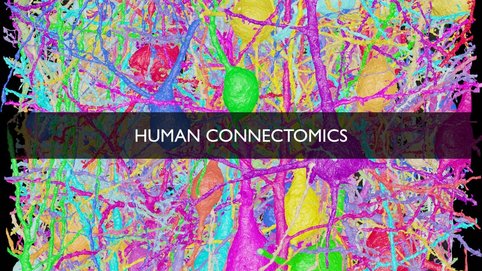Multimedia
Loomba et al. 2022
Dense network mapping in human cortex reveals a large interneuron-to-interneuron network that is almost absent in the mouse. This novel neuronal network may constitute a key evolutionary invention in human cortex. Loomba et al., Science 2022 (science.org/doi/10.1126/science.abo0924)
https://www.youtube.com/watch?v=5oZXnUrsgiY
For more information see here
Gour et al. 2021
How can you build neuronal networks that are more complex than anything known today? Researchers at the Max Planck Institute for Brain Research in Frankfurt, Germany, have mapped the development of inhibitory neuronal circuitry and report the discovery of distinct circuit formation principles. Their findings enable scientists to monitor the change of neuronal network structure longitudinally, capturing moments when an individual grows and adapts to its environment. Gour et al., Science 2020 (science.org/doi/10.1126/science.abb4534)
https://www.youtube.com/watch?v=tVdkPvDa1JM
Researchers use connectomic mapping in the developing cortex to uncover the developmental wiring rules for inhibitory neurons Gour et al., Science 2020 (science.org/doi/10.1126/science.abb4534)
https://www.youtube.com/watch?v=nc11Ppr6dh8
For more information see here
Karimi et al. 2020
For more information see here
Motta et al. 2019
Analysis of neurons and their synapses in a dense reconstruction from the cerebral cortex. Science 2019 (science.org/doi/10.1126/science.aay3134). Mammalian brains, with their unmatched number of nerve cells and density of communication between them, are the most complex networks known. While methods to analyze neuronal networks sparsely, accessing about one in every ten thousandth nerve cell have been available for decades, the dense mapping of neuronal circuits by imaging each and every synapse and all neuronal wires in a given piece of brain tissue has been a major challenge. In an article published October 24, 2019 in Science, researchers from the Max Planck Institute for Brain Research in Frankfurt, Germany, report that they succeeded in the dense connectomic mapping of about half a million cubic micrometers of brain tissue from the mouse cerebral cortex using 3-dimensional electron microscopy and AI-based image analysis. Colorful version https://youtu.be/3dGTStDw3J4
https://www.youtube.com/watch?v=bpIKBkf5QRE
For more information see here
PLASS 2017
For more information see http://plass.brain.mpg.de/.
webKnossos 2017
For more information see https://webknossos.org/.
SynEM 2017
SegEM 2015
Flight along an axon in mouse cerebral cortex, showing the “skeleton” of the nerve cell; followed by a display of SegEM-reconstructed nerve cells. Berning, Boergens, Helmstaedter 2015, © Max Planck Institute for Brain Research
For more information see the SegEM paper.
Neural circuit reconstruction using SegEM
“Neural circuit reconstruction using SegEM”, Berning, Boergens, Helmstaedter 2015 © Max Planck Institute for Brain Research
https://www.youtube.com/watch?v=mFhBJTXjqhM
Retina Flight 2013
Volume reconstruction of 950 nerve cells in a block of mouse retina. Each color represents one neuron. Flight along the blood vessels (appearing as “tunnels” in the dense web of neuronal processes). When diving into the nerve cell tissue, a large fraction of the volume is densely filled with nerve cell fibers, the “cables” in the brain. Glia cells and nerve cells that had their cell bodies outside of the data block are not shown. Helmstaedter et al., 2013; © Max Planck Institute for Medical Research, Heidelberg, Germany
Retina connectome 2013
Illustration of the process by which a three-dimensional electron-microscopic data set is turned into a cellular-resolution connectivity matrix (“connectome”). Helmstaedter et al., 2013; © Max Planck Institute for Medical Research, Heidelberg, Germany
https://www.youtube.com/watch?v=x-KL5B80V2o




















